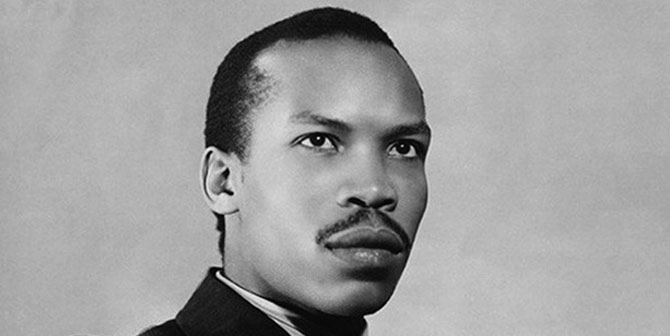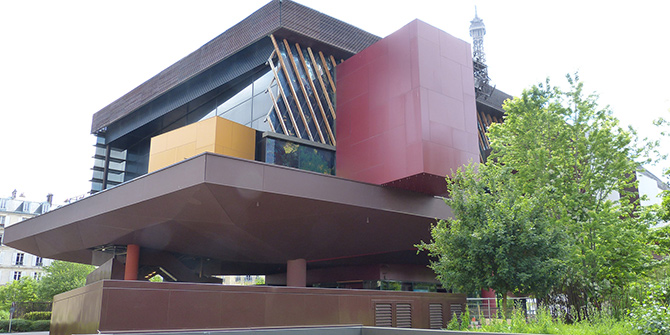“A landmark exhibition at the British Library finally explodes the colonial myth of Africa being the dark continent.”
So begins a review of the ongoing British Library exhibition West Africa: Word, Symbol, Song in the publication Nigerian Watch, praise that is very much deserved.
From the ancient Mali empire to the modern day, West Africa: Word, Symbol, Song traces over 1000 years of history and culture through the medium of oral and written literature and song. Curated by Marion Wallace and Janet Topp Fargion, this exhibition is having a huge impact in transforming knowledge and understanding of West Africa, a diverse region boasting 17 countries populated by 340 million people speaking over 1000 languages.

This is a source of immense pleasure to Wallace, Lead Curator, African Collections at the British Library whose chief aim was that this exhibition would set straight wrong ideas about the continent.
“There is this big disjunct between popular views of Africa which are very conditioned by starving babies, child soldiers, Ebola, all which are true from time to time at least, and just simply not knowing about the cultures of Africa, the state building that occurred in Africa, not understanding that people lived in huge empires, controlled their own goldmines, just to name a few,” Wallace said.
“These are all very simple things that any first year undergraduate who has studied African history would be able to tell you but it is really not generally known.”
She continued: “We wanted to correct misconceptions such as the belief that there was no writing in Africa before the Europeans brought it. Africa is seen as a continent of orality and voice which in some ways is a concept that denigrates Africa in that oral culture is viewed as a poor cousin to written culture.
“One of the first things you see in the exhibition is a gourd, a big calabash, borrowed from the British Museum which has Nsibidi symbols from south east Nigeria.
“The calabash is probably from the 19th century, but the symbolic system on it probably has much older roots. There is archaeological evidence to suggest that those roots could go back a millennium.
“Equally, Arabic scholarship around the Koran, Islamic theology and other subjects from astronomy, mathematics to biography has existed as long ago as a millennium. There is certainly one manuscript that predates that as long as 1500 years ago.”
In addition to manuscripts, materials on display in the exhibition also include historic film and sound recordings, books, photographs and woven and printed textiles.
Everything on display tells a story, whether contemporary or historical. From Adelaide Casely-Hayford who made it her life’s mission to educate African girls to freed Africans such as Olaudah Equiano and Ottobah Cugoano who became vocal critics of the slave trade, West Africa: Word, Symbol, Song unveils a textured narrative with a multiplicity of stories and experiences from the region of West Africa.
A particularly remarkable inclusion in the exhibition are letters written by Ayuba Suleiman Diallo, a high status Muslim from what is now Senegal. He was enslaved in 1731 and taken to North America, but talked his way out of slavery with the help of a patron. He spent 1733 in England where he became a hit, was presented to royalty, had his portrait painted before going back to Senegal in 1734. At the time, it was unheard of for someone who was enslaved to survive and return to Africa.
“These letters were uncovered by one of my colleagues who has been working on ancient Arabic manuscripts,” Wallace revealed.
“Diallo is said to have written three Korans from memory while in England in 1733. One of them came up for auction recently and we’ve borrowed it from the new owner. That is in the exhibition along with two letters written by Diallo – one that was already known about and the other completely in Arabic.”
Among Wallace’s favourite pieces in the exhibition are a series of small books published in Nigeria in the 1960s.
“The Mbari Club was a groundbreaking publisher in that moment of literary creativity just after independence,” Wallace said.
“They were also an arts promoter in visual arts and literature and they published books and pamphlets by a number of distinguished writers such as Wole Soyinka, one of the first members of the club, and South African Denis Brutus.
She added: “The Sudanese artist Ibrahim el-Salahi did an exhibition in Ibadan in the early 60s and they published his drawings. Most of the drawings in that pamphlet were published by Mbari for the first time.
“The books are beautifully illustrated usually in black and white. We have six on display and twice as many in our collections.”
West Africa: Word, Symbol, Song continues at the British Library until February 16. Tickets cost £10, Under 18s go free. Discounts are available for group bookings.
The views expressed in this post are those of the authors and in no way reflect those of the Africa at LSE blog or the London School of Economics and Political Science.





